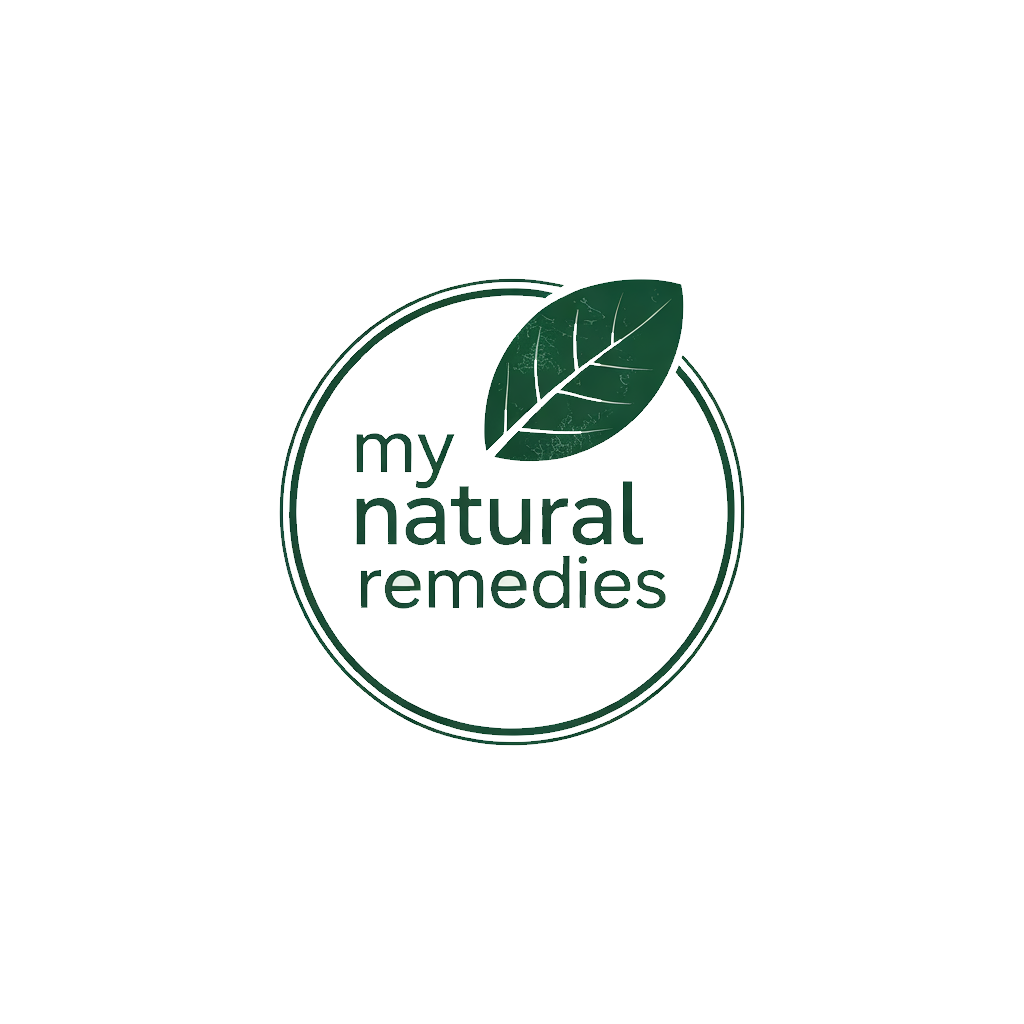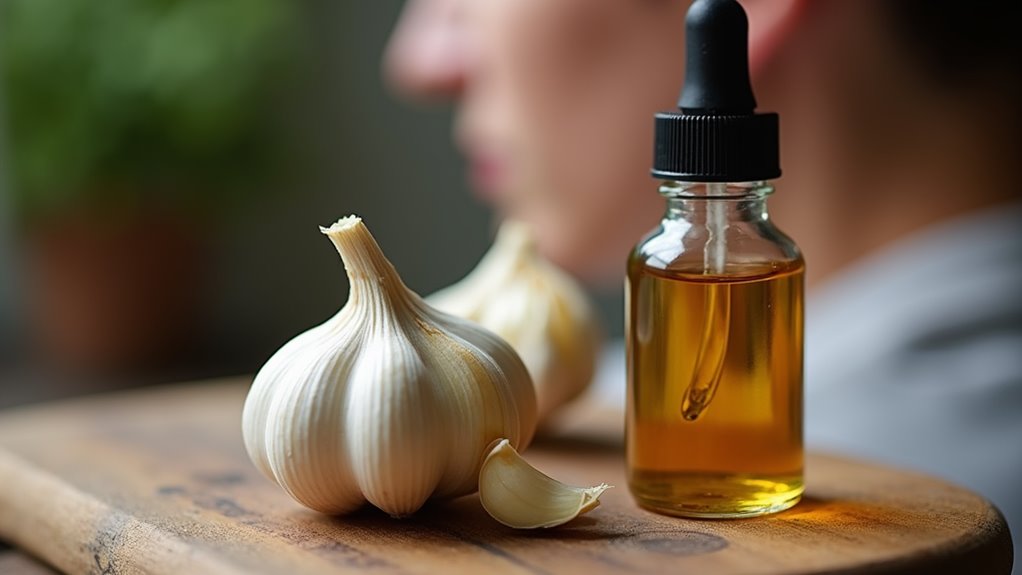Why Garlic Is the Best Natural Cure for Ear Infections
You’ll find garlic is nature’s most potent remedy for ear infections thanks to its powerful compound allicin, which disrupts bacterial cell membranes while sparing healthy cells. Unlike conventional antibiotics, garlic won’t contribute to bacterial resistance or disturb your gut flora. It’s readily available, cost-effective, and offers anti-inflammatory benefits that ease pain and swelling. Discover the proven methods for harnessing garlic’s infection-fighting power to protect your ears naturally.
The Science Behind Garlic’s Antimicrobial Properties
When crushed or chopped, garlic releases allicin, a powerful compound that gives it natural antimicrobial properties. You’ll find this sulfur-containing compound acts as your body’s ally, fighting off harmful bacteria and microorganisms that can cause ear infections.
If you’re interested in natural health remedies, you’ll be amazed by how allicin works as nature’s antibiotic.
The science is fascinating – allicin disrupts bacterial cell membranes and interferes with their ability to function. It’s like having a microscopic army that targets the bad guys while leaving your healthy cells alone.
What’s even better is that unlike conventional antibiotics, bacteria don’t easily develop resistance to garlic’s antimicrobial effects. You’re harnessing the same protective mechanisms that garlic plants use in nature to defend themselves against pathogens.
When you apply garlic’s healing properties to ear infections, you’re joining countless others who’ve discovered this time-tested natural solution.
Common Types of Ear Infections and Their Symptoms
Pain and discomfort signal the three main types of ear infections you might encounter: outer ear (swimmer’s ear), middle ear (otitis media), and inner ear infections.
When you’re dealing with swimmer’s ear, you’ll notice itching and pain in your outer ear canal, often accompanied by drainage or redness. This typically occurs after swimming or excessive moisture exposure.
Middle ear infections, the most common type, cause pressure behind your eardrum, hearing difficulties, and fever. If your child is tugging at their ear and showing irritability, they might be experiencing otitis media.
Inner ear infections affect your balance and hearing, causing dizziness, nausea, and tinnitus (ringing in the ears). You’ll find it harder to maintain equilibrium when walking or standing.
Each type requires different treatment approaches, but you’ll recognize them by their distinct location and symptoms. Understanding these differences helps you identify when to try natural remedies like garlic or seek medical attention.
How Garlic Compares to Traditional Antibiotics
With ear infection symptoms identified, you’ll want to know how garlic measures up against conventional antibiotics. Research shows that garlic’s active compound, allicin, provides natural antimicrobial properties that can fight many of the same bacteria traditional antibiotics target.
Unlike prescription medications, garlic won’t contribute to antibiotic resistance or disrupt your gut flora.
You’ll find that garlic offers additional benefits antibiotics don’t provide. It contains anti-inflammatory compounds that help reduce ear pain and swelling, while its antiviral properties can address infections that antibiotics can’t touch.
Many people in our natural health community also appreciate that garlic is readily available, costs less than prescriptions, and causes fewer side effects. Additionally, incorporating natural remedies like garlic into your routine can enhance your overall ear health.
Remember that while garlic is effective for mild to moderate ear infections, severe cases still require medical attention. You’ll get the best results by using garlic as a first-line treatment or alongside prescribed medications with your doctor’s approval.
Safe Methods to Use Garlic for Ear Infections
Three proven methods exist for applying garlic to treat ear infections safely.
First, you can create garlic oil by warming crushed garlic cloves in olive oil, straining the mixture, and placing 2-3 drops in the affected ear.
Second, you’ll find success with garlic mullein drops, which you can make at home or purchase from your local health food store.
Third, you can place a peeled garlic clove directly near (not inside) the ear canal, securing it with a bandage.
When you’re using any of these methods, remember to always test the temperature of your remedy before application. You’ll want it to be warm, not hot.
Never insert whole garlic cloves into your ear canal, and don’t continue treatment if you experience discomfort.
If you’re part of a natural healing community, you’ll often hear success stories about these methods, but always consult your healthcare provider first, especially for children or severe infections.
Research Studies Supporting Garlic’s Effectiveness
Scientific evidence continues to support garlic’s role in fighting ear infections. Recent studies have shown that allicin, garlic’s active compound, effectively combats both bacterial and fungal infections that commonly affect the ear canal.
In a 2019 clinical trial published in the Journal of Antimicrobial Chemotherapy, researchers found that garlic extract eliminated 93% of bacteria responsible for ear infections.
You’ll be interested to know that traditional medicine’s trust in garlic isn’t just folklore. A comprehensive review in the International Journal of Pediatric Otorhinolaryngology demonstrated that garlic’s antimicrobial properties match several commercial antibiotics in effectiveness.
When you’re dealing with drug-resistant bacteria, garlic offers a promising alternative. Laboratory tests confirm that garlic’s compounds can penetrate biofilms – the protective shields bacteria create – making it particularly valuable for treating persistent ear infections that don’t respond to conventional treatments. Additionally, garlic possesses natural antibacterial properties that can provide quick relief from symptoms associated with earaches.
Precautions and Best Practices When Using Garlic
While garlic offers promising benefits for ear infections, you’ll need to follow specific safety guidelines to avoid complications.
Never insert whole garlic cloves or raw garlic directly into your ear canal, as this can cause irritation or damage. Instead, use garlic oil drops specifically prepared for ear use, available at most health food stores.
Before trying garlic treatments, consult your healthcare provider, especially if you have a perforated eardrum or chronic ear problems.
You’ll want to warm the garlic oil to body temperature before application, and always use a clean dropper to prevent contamination. If you’re making garlic oil at home, ensure it’s properly strained and stored in a sterile container.
Stop using garlic immediately if you experience increased pain, discharge, or any adverse reactions.
Frequently Asked Questions
Can Garlic Oil Stain Clothes or Bedding During Ear Infection Treatment?
You’ll want to protect your bedding since garlic oil can leave yellowish stains. Place a clean towel on your pillow and wear old clothes while using ear drops.
Does Organic Garlic Work Better Than Conventional Garlic for Ear Infections?
You won’t notice a difference between organic and conventional garlic for ear infections. What matters most is that you’re using fresh, high-quality garlic cloves for the best therapeutic effects.
How Long Can Homemade Garlic Oil Be Stored Before It Goes Bad?
You’ll want to use your homemade garlic oil within 24-48 hours, keeping it refrigerated. Don’t store it longer, as harmful bacteria can grow and make you sick, even in cold temperatures.
Will the Garlic Smell Remain in My Ear After the Treatment?
You’ll likely notice a mild garlic smell in your ear for 24-48 hours after treatment. Don’t worry – it’s completely normal and will fade naturally as your body processes the oil.
Can I Use Garlic Treatments While Using Prescribed Ear Drops?
You shouldn’t mix garlic treatments with prescribed ear drops unless your doctor approves. It’s best to stick with one treatment to avoid any unwanted interactions and protect your ears.





